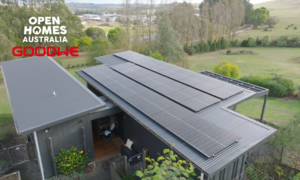Researchers at Purdue University and Sandia National Laboratories have developed sensors and software to continuously monitor forces exerted on wind turbine blades, a step toward improving efficiency by adjusting for rapidly changing wind conditions.
Uniaxial and triaxial accelerometers embedded inside a wind turbine blade could be used in conjunction with "control surfaces" and flaps like those on an airplane’s wings to change the aerodynamic characteristics of the blades in order to achieve better control.
The sensors measure two types of acceleration; dynamic acceleration resulting from gusting winds and static acceleration; from gravity and the steady background winds. Data from the sensors reveal precisely how much a blade bends and twists from winds.
Large wind turbine blades are usually made of fibreglass and balsa wood and occasionally are strengthened with carbon fiber. While the blades of a turbine are lightweight yet strong, continuous forces in varying conditions leads to fatigue, which can sometimes go undetected. With wind turbine towers being so high, it can also be quite risky and very expensive to service and repair damaged components.
The system also could help protect wind turbines by providing critical real-time information to the control system to prevent catastrophic damage from severe weather.
A blade with sensors installed is now being tested on a research wind turbine at the U.S. Department of Agriculture’s Agriculture Research Service laboratory in Bushland, Texas.












































